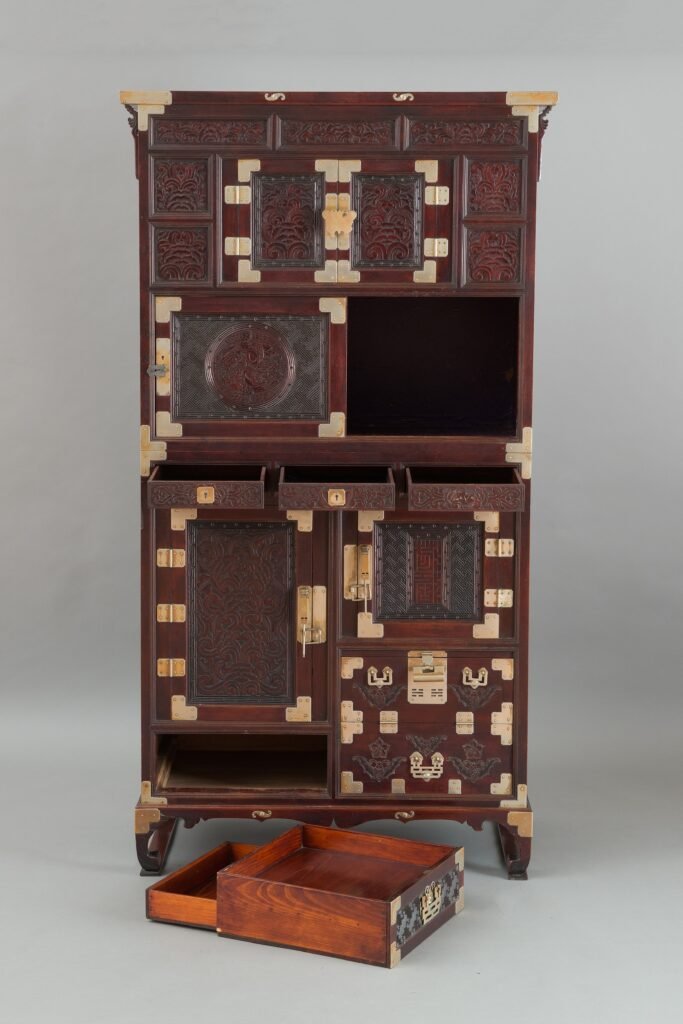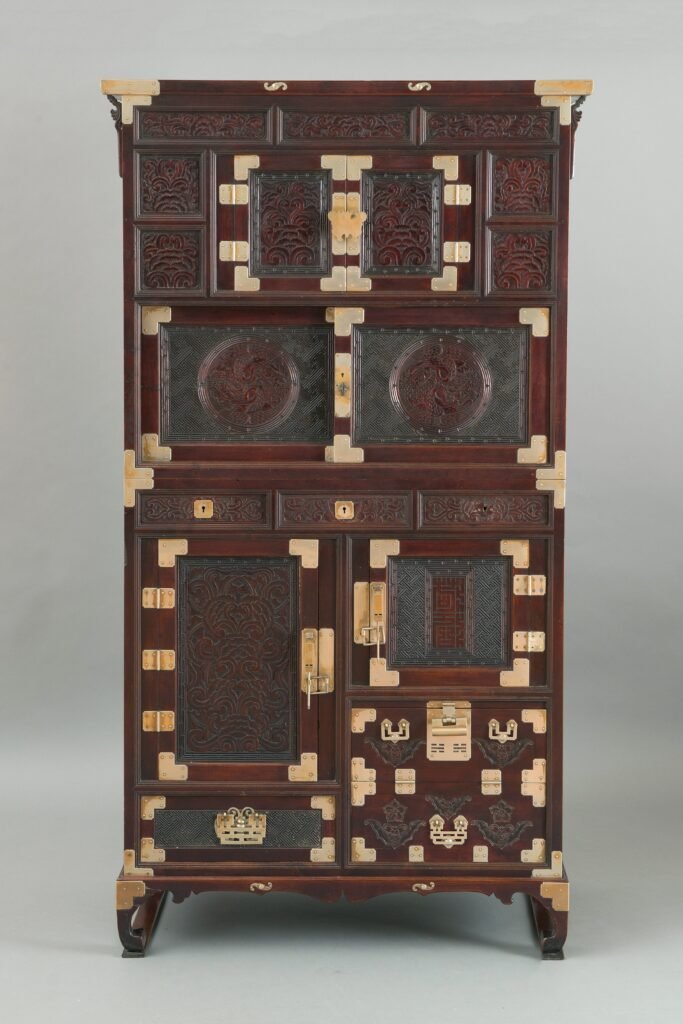Our exploration of the various collections housed in Korean furniture museums has enabled us to identify furniture with distinctive designs.
Feature image: Described as a clothing chest. Period Japanese occupation, early 20th century.
H. 121,5cm, W. 88cm, D. 39cm.
Also called a Jeongju wardrobe, this chest is from Jeongju city, capital of North Jeolla province
DOCUMENT & STATIONERY CHESTS.
This document chest is called a “Mungap jang” – 문갑장. Made of pine and elm wood with yellow brass and iron fittings.
Due to its size and two-tier composition, this piece of furniture look like a “Jeongju” style bandaji. However, it lacks the “Bandaji” style front closure. The upper section features four drawers above a “Mungap” or document chest design. The lower part features two doors giving access to a storage area. Probably used for document storage, it’s called a “Mungap Jang” and likely originates from the Jeolla Do province.

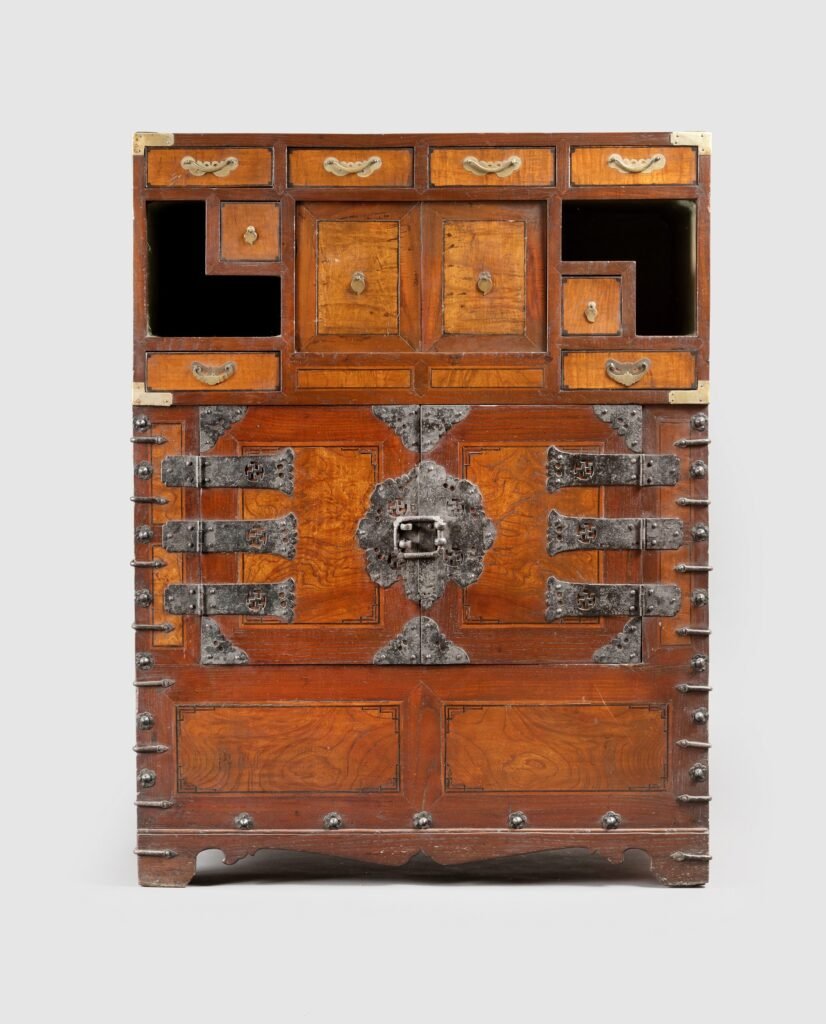
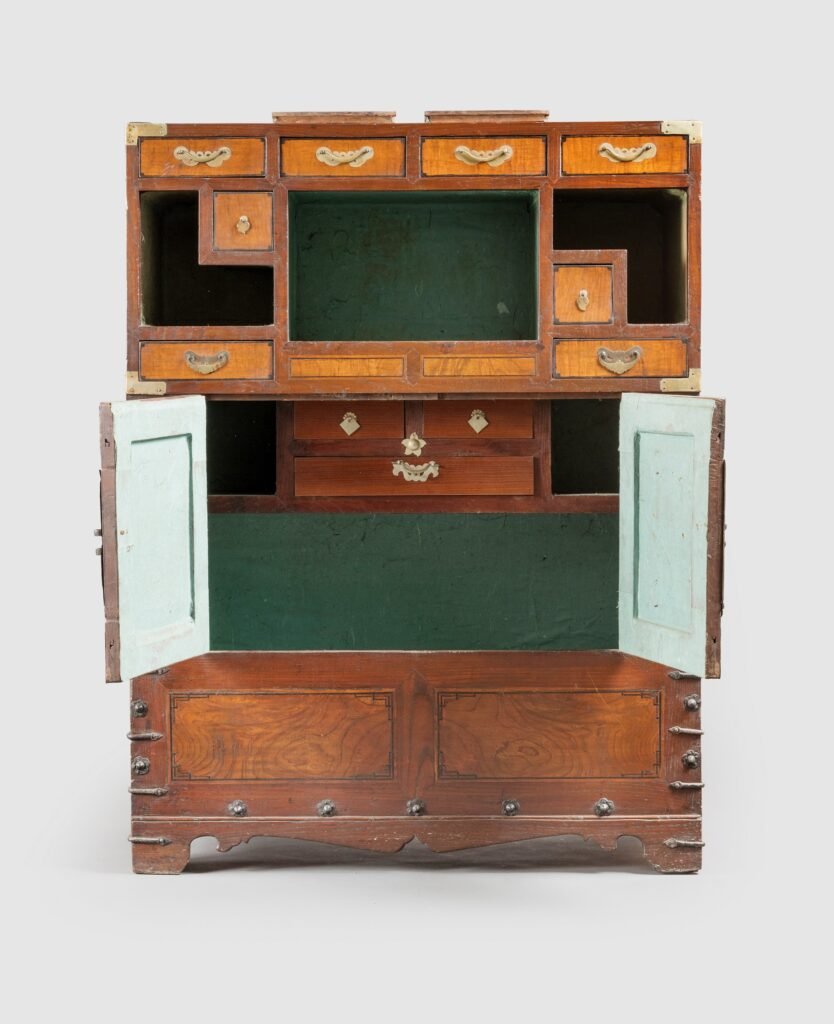

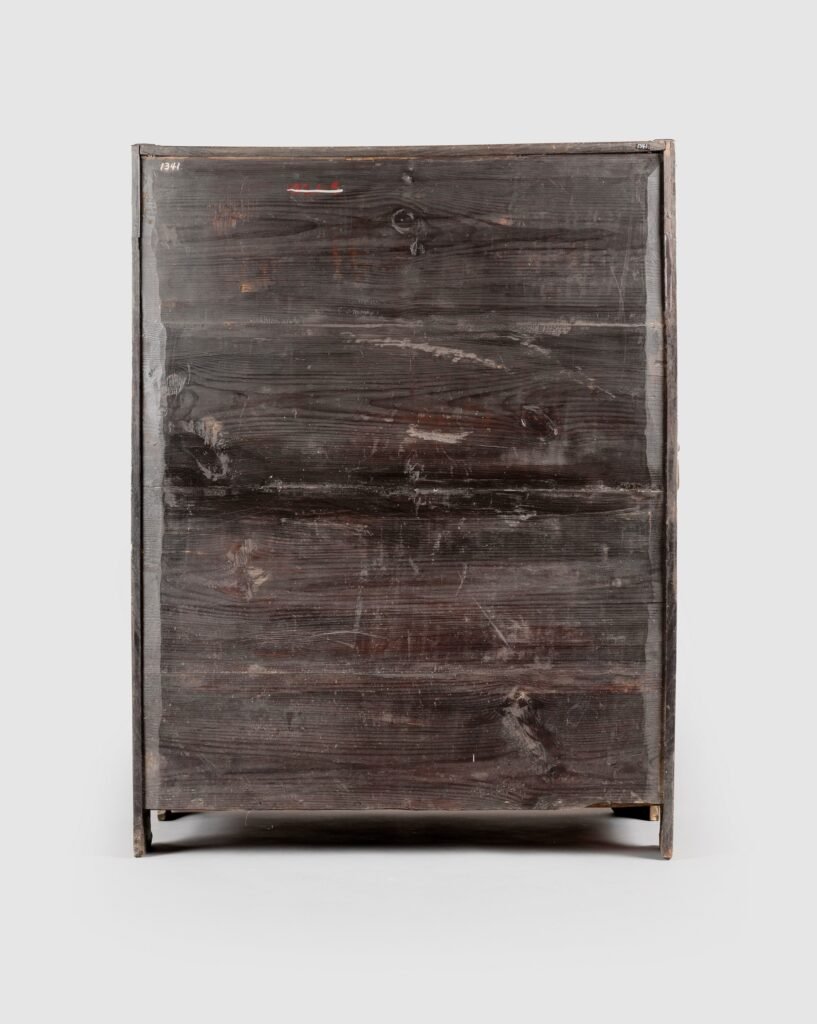
Below are photos of a “Mungap” document cabinet and the traditional “Jeongju Bandaji.”
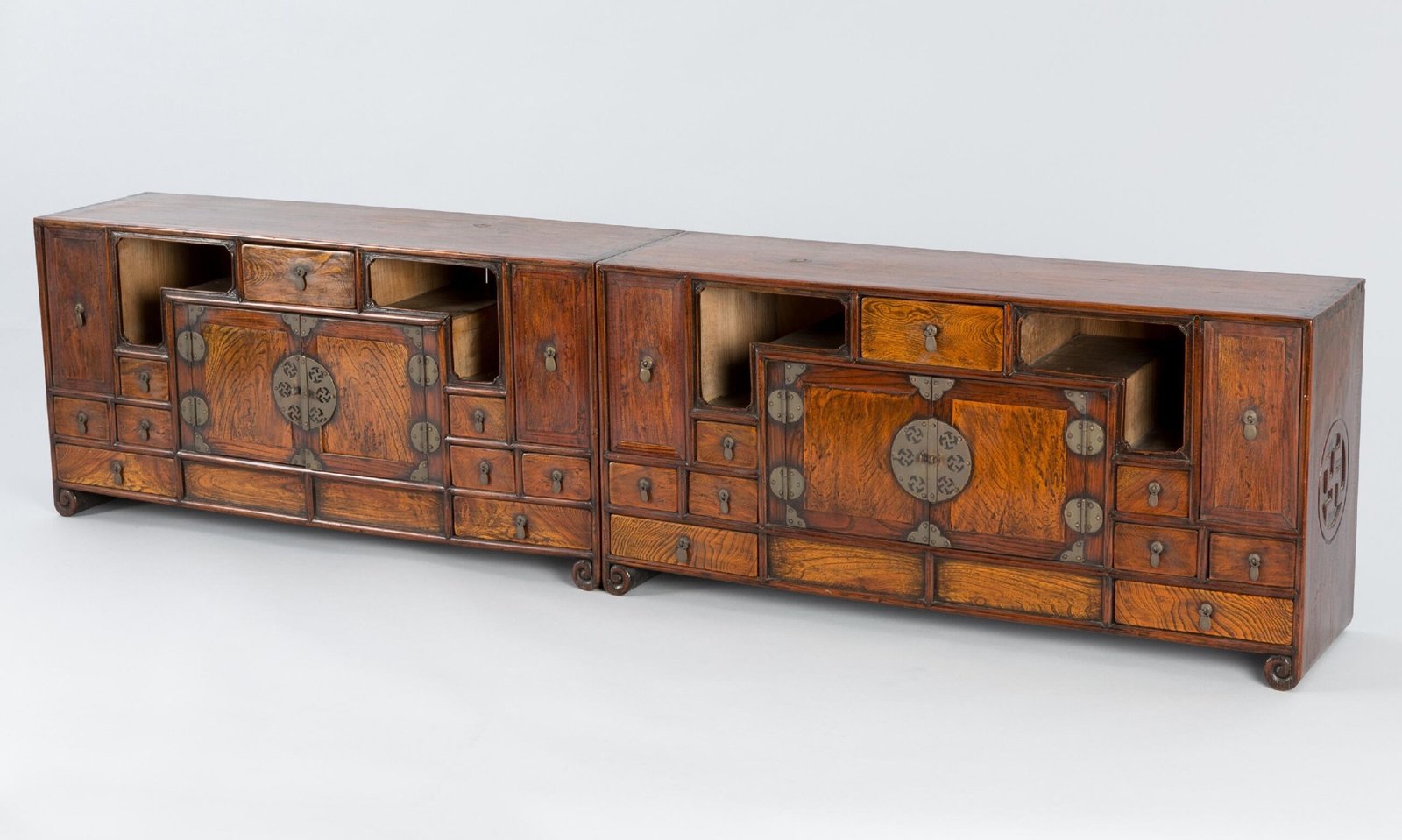
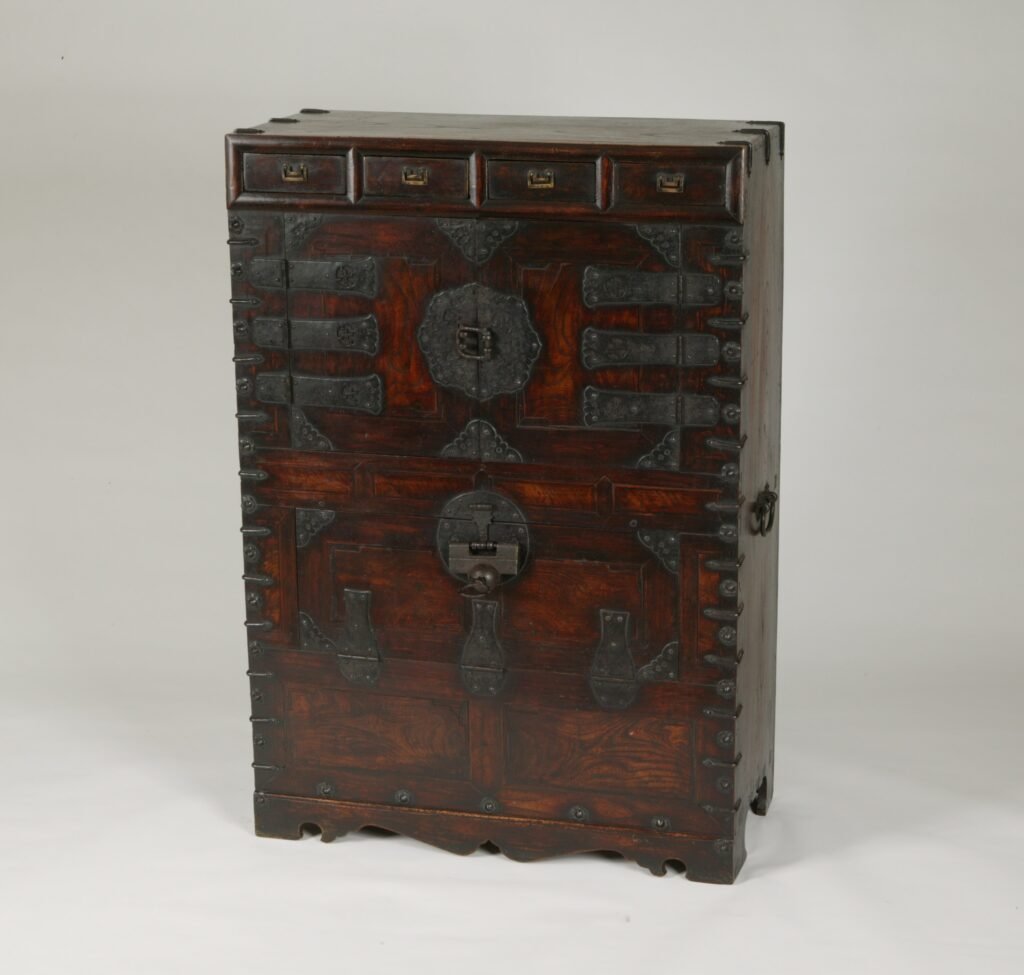
Another example of document furniture, this cabinet features two superimposed “Mungap.” The mungap was typically a piece of furniture with reduced height, allowing it to be conveniently used from a seated position.

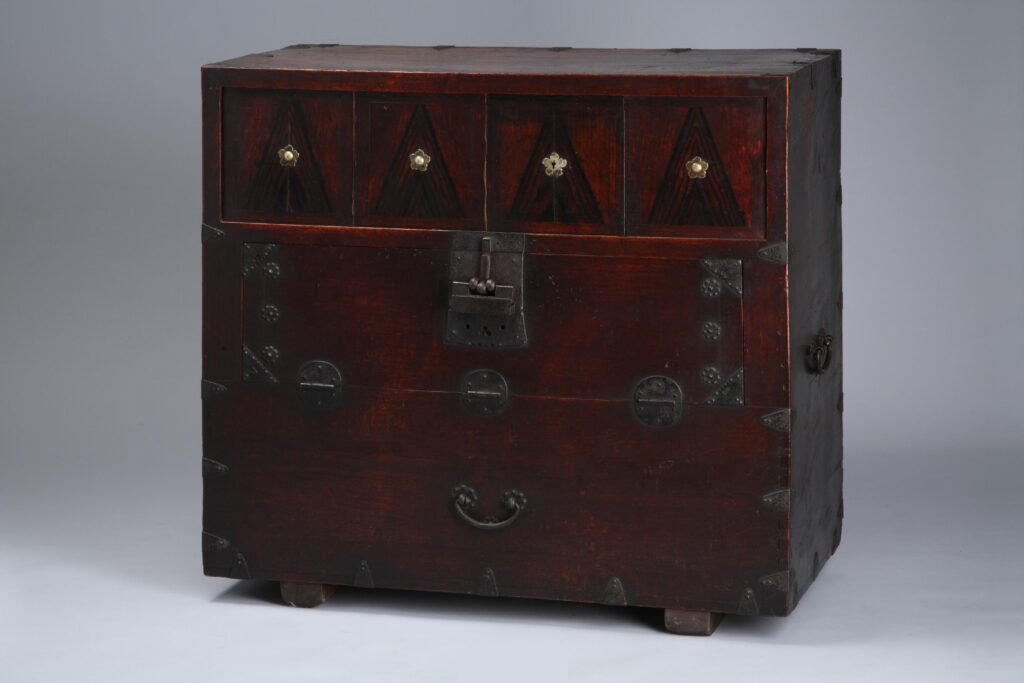
Collection: National Museum of Korea, Seoul.
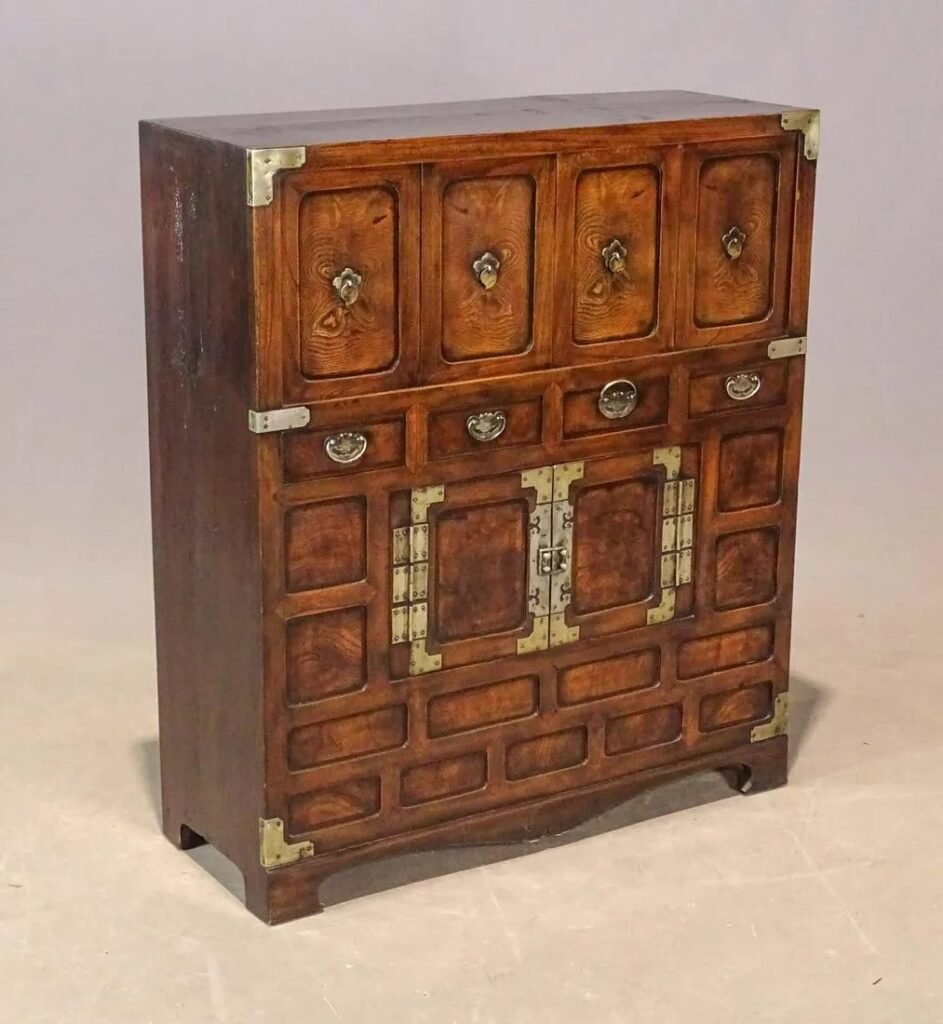
Traditional “Mungap” cabinets.
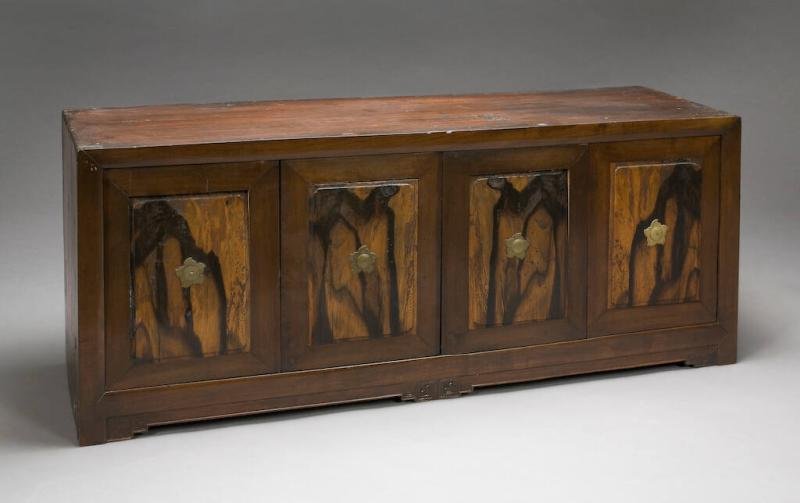
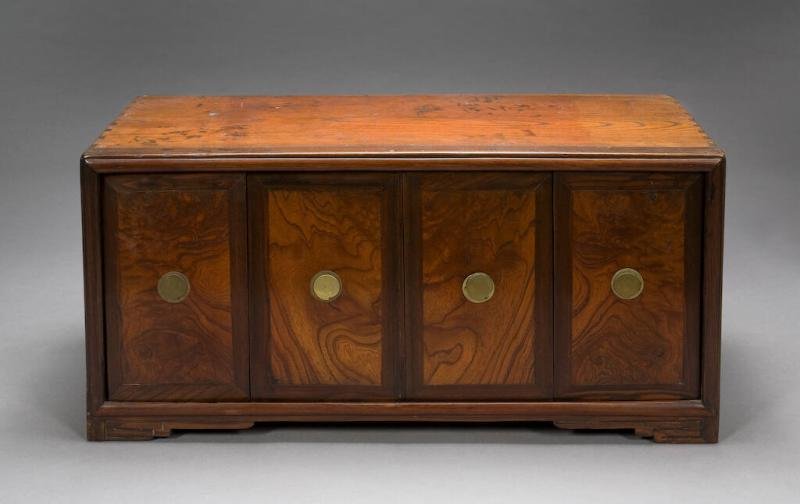
This “Nong” has been modified by adding two storage spaces on the top and bottom, comprising drawers and open spaces. A classic “Nong” can include drawers, often small ones on the upper part of the cabinet.

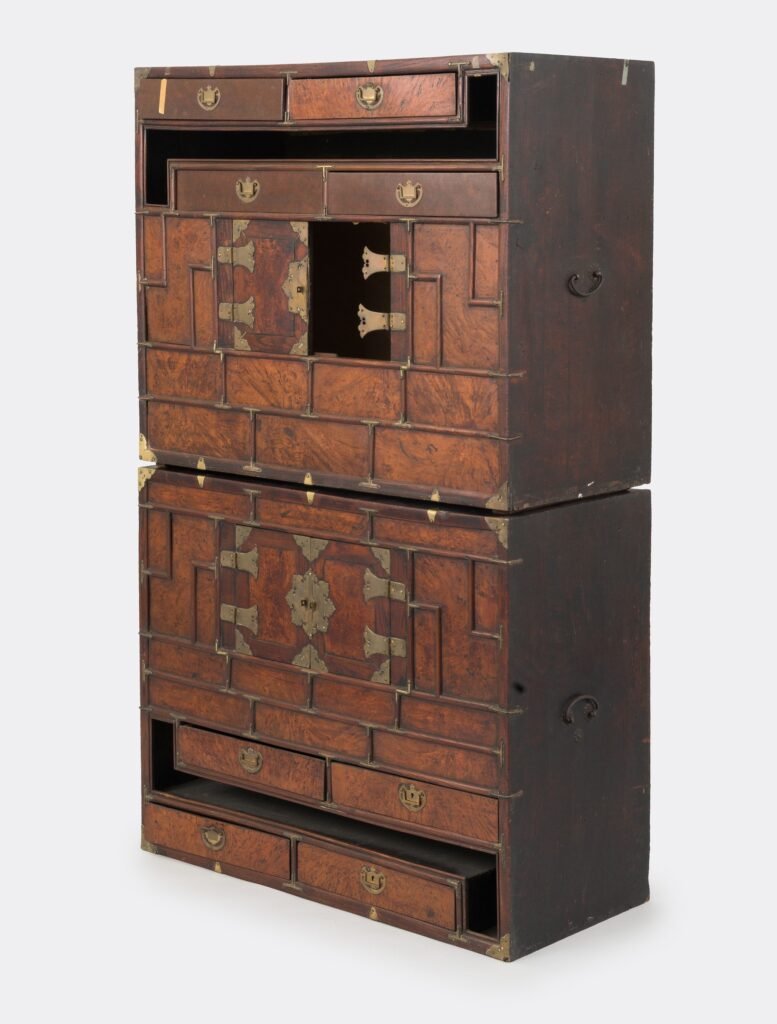

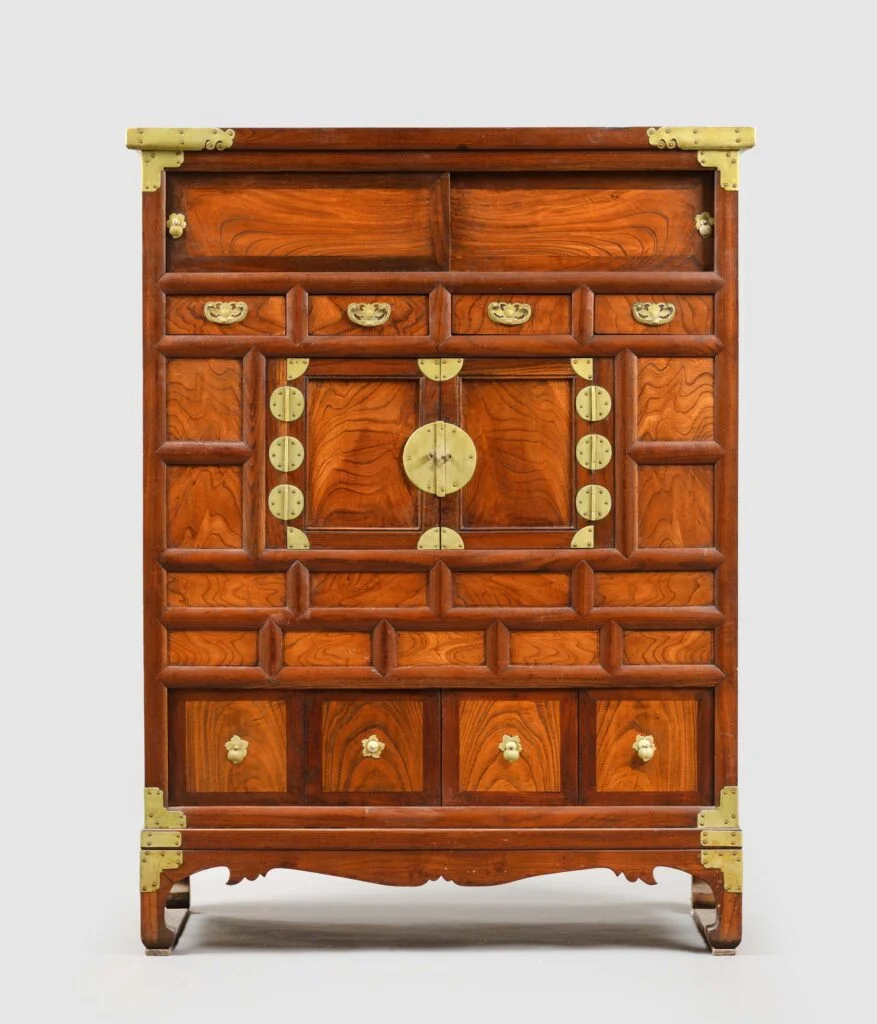
This stationary chest has an unusual number of drawers. In basic designs, the stationary chest was taller with fewer drawers and a larger storage space at the bottom.
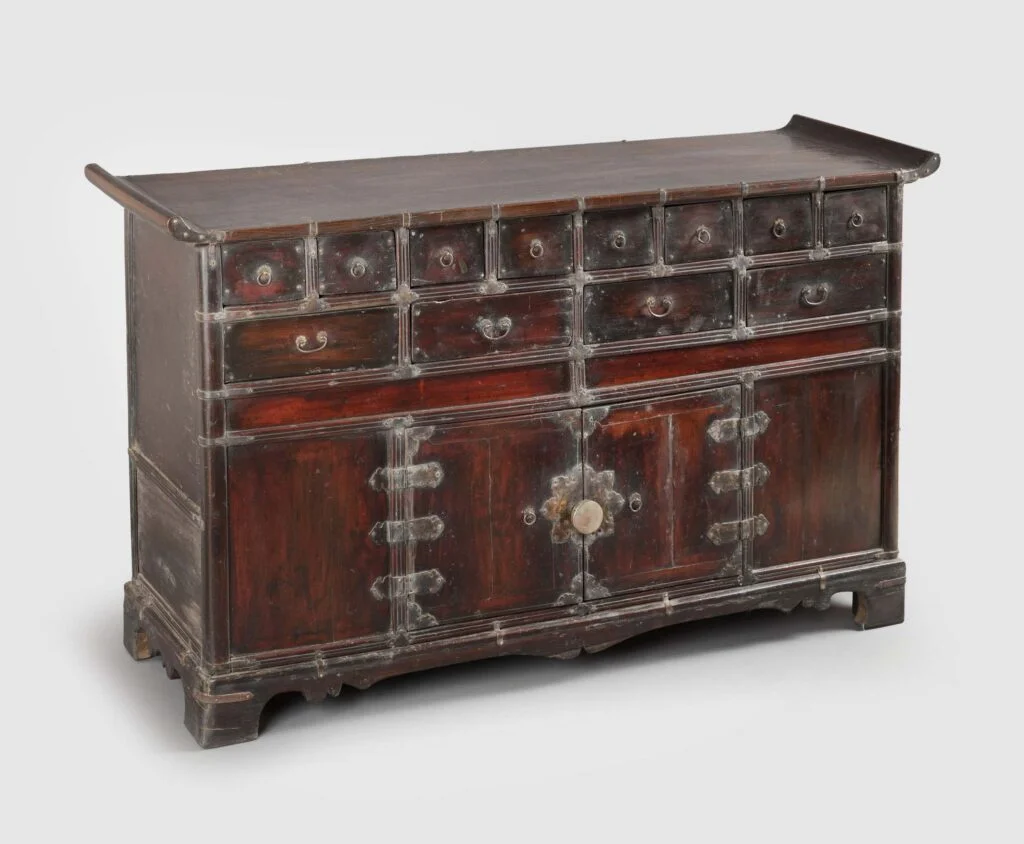
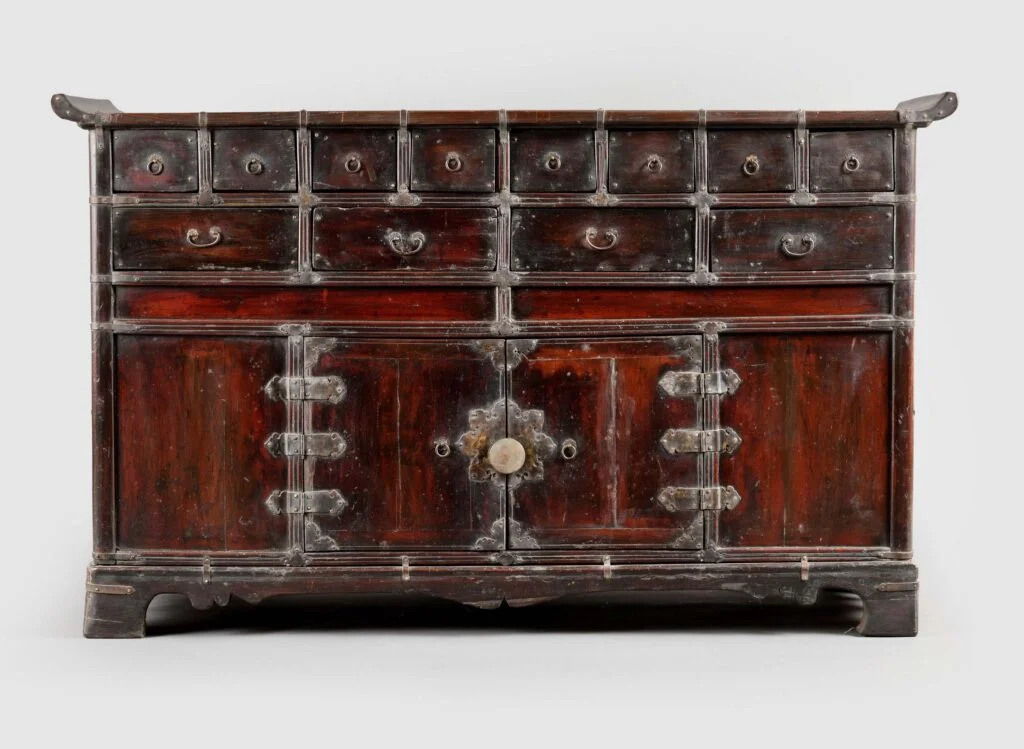
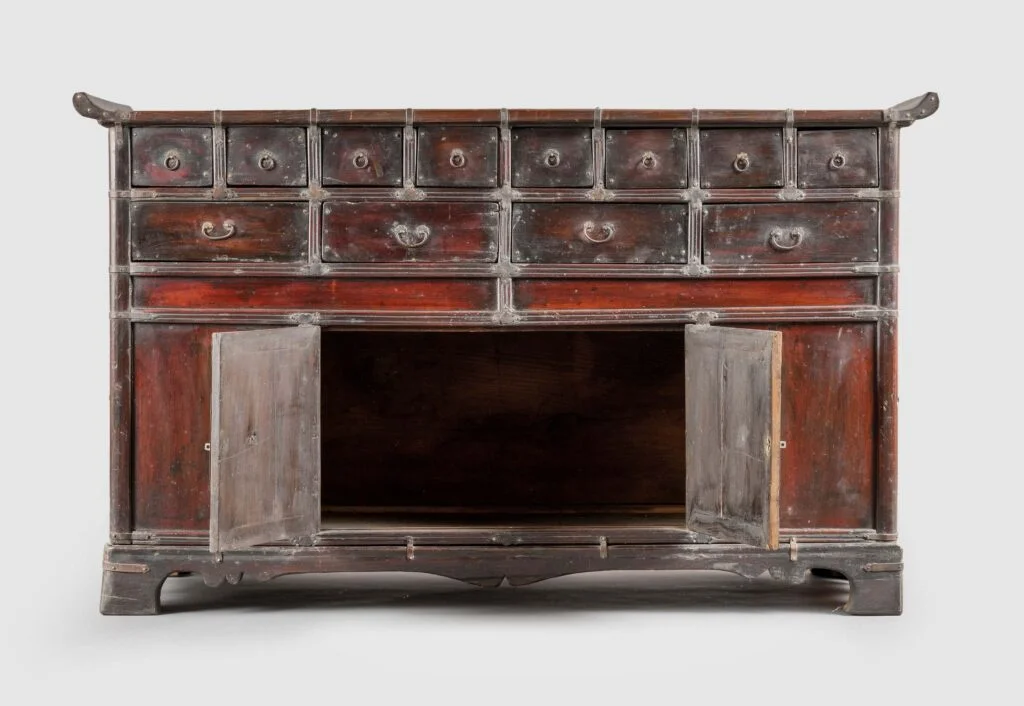

This chest is a four-level cabinet made in the late 19th century during the Joseon dynasty. The first and second levels have swinging doors. The third level consists of a swing door, three drawers, and an L-shaped open space. The fourth level is an empty space.
BANDAJI.
Bandaji furniture is easy to recognize: simple shapes with a folding front opening. However, we have noticed modifications to this design, particularly in the southern provinces of the peninsula. The following examples come from the provinces of Gyeongsang Do and Gangwon Do.
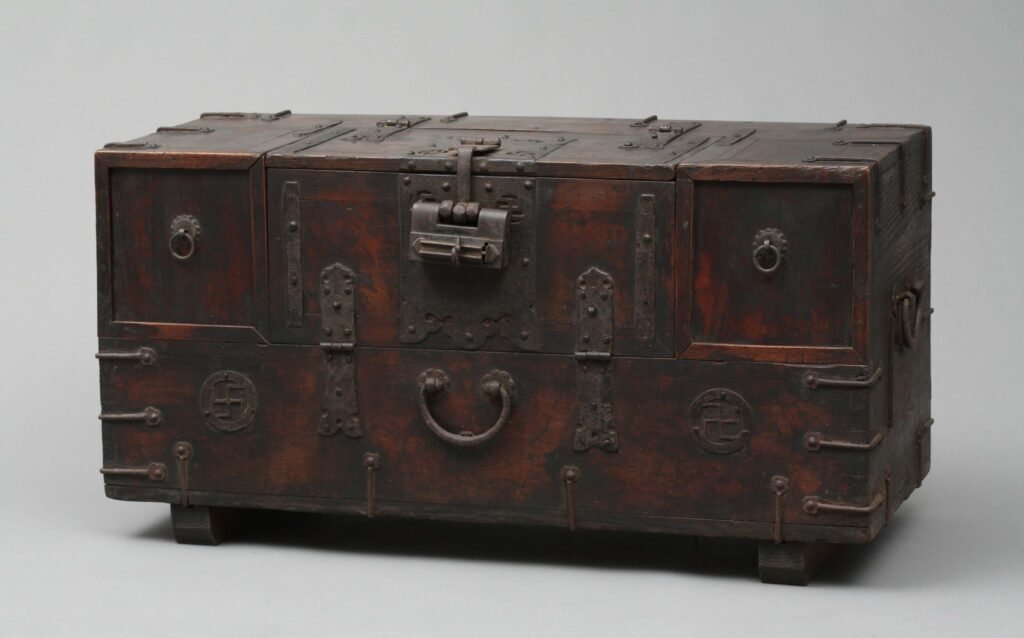
On this Bandaji, the front panel does not extend the full length. It is reduced in size in the center of the cabinet and is surrounded on each side by a drawer. The relatively low height of the cabinet seems to indicate its provenance from the province of Gyeongsang Do.
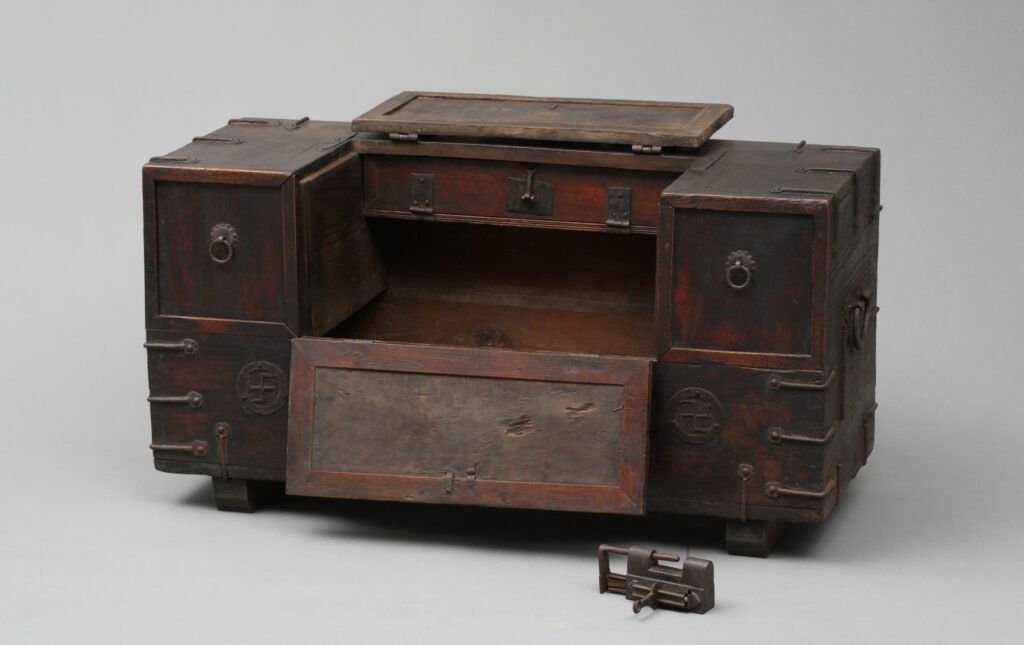
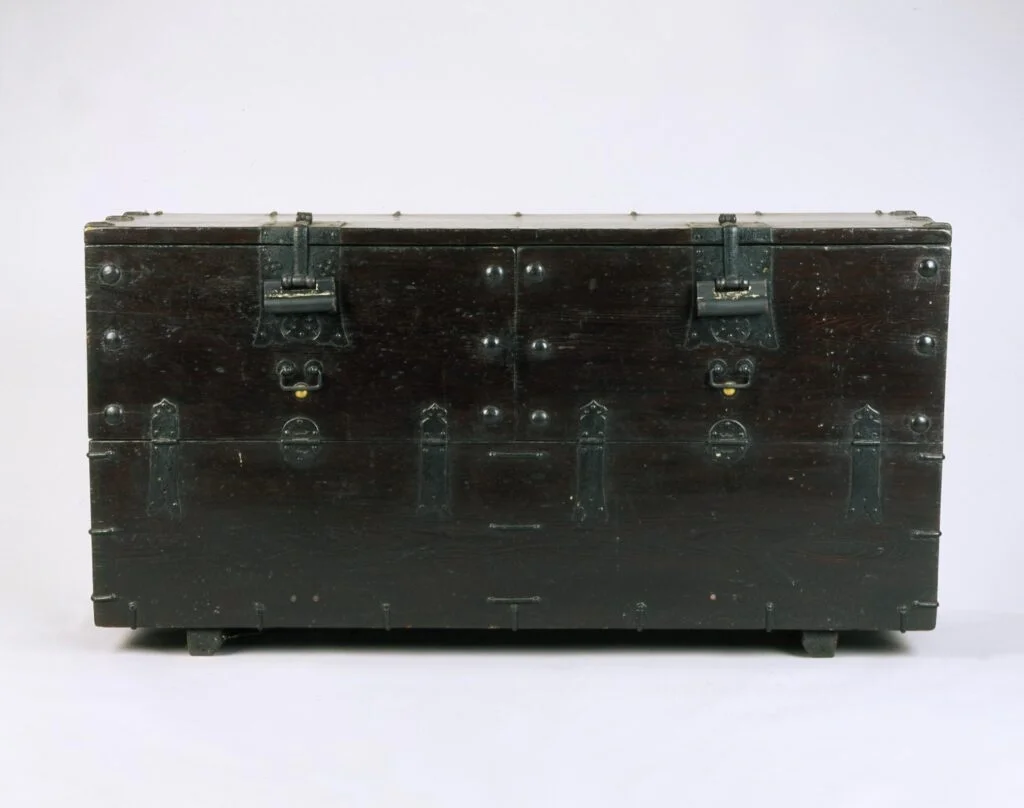
Another chest from Gyeongsang Do province has two front opening panels instead of the regular single panel design.
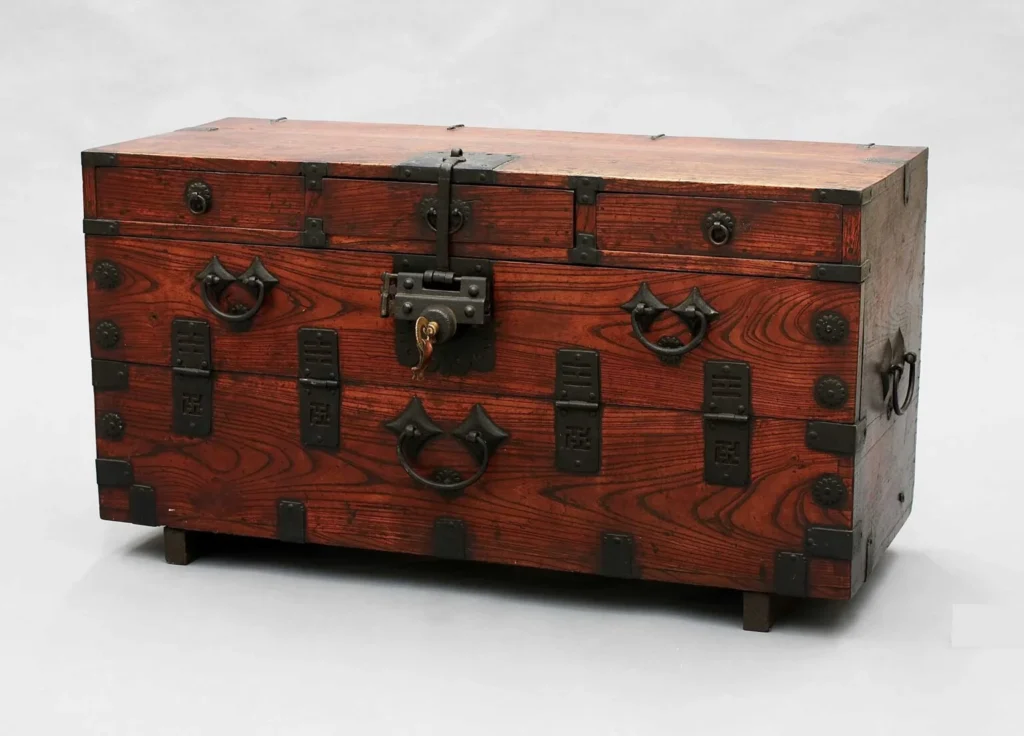
Notice the presence of drawers on the upper part of this Bandaji. It’s not a common feature.
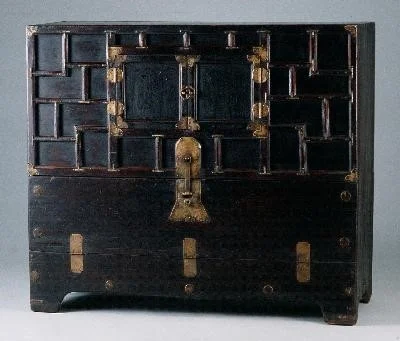
Collection: National Museum of Korea.
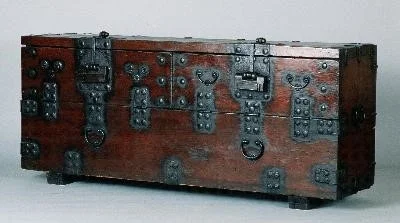
Collection: National Museum of Korea.
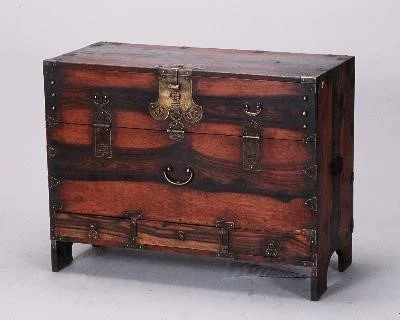
H. 67cm, W. 87cm, D. 43cm.
Collection: National Museum of Korea.
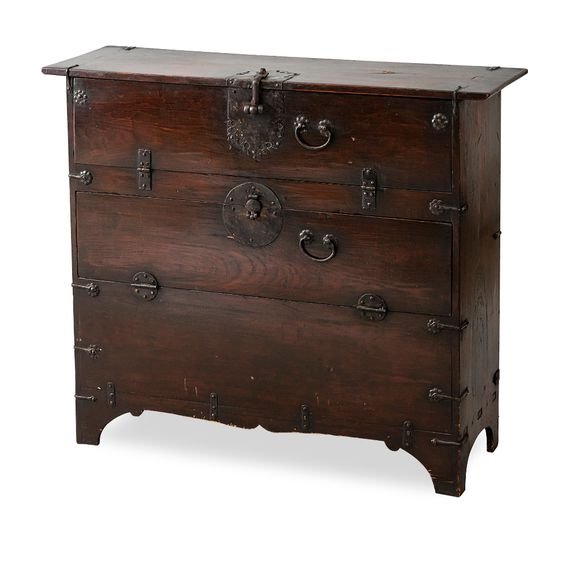

The following models (9 pieces) all come from Gangwon Do province.
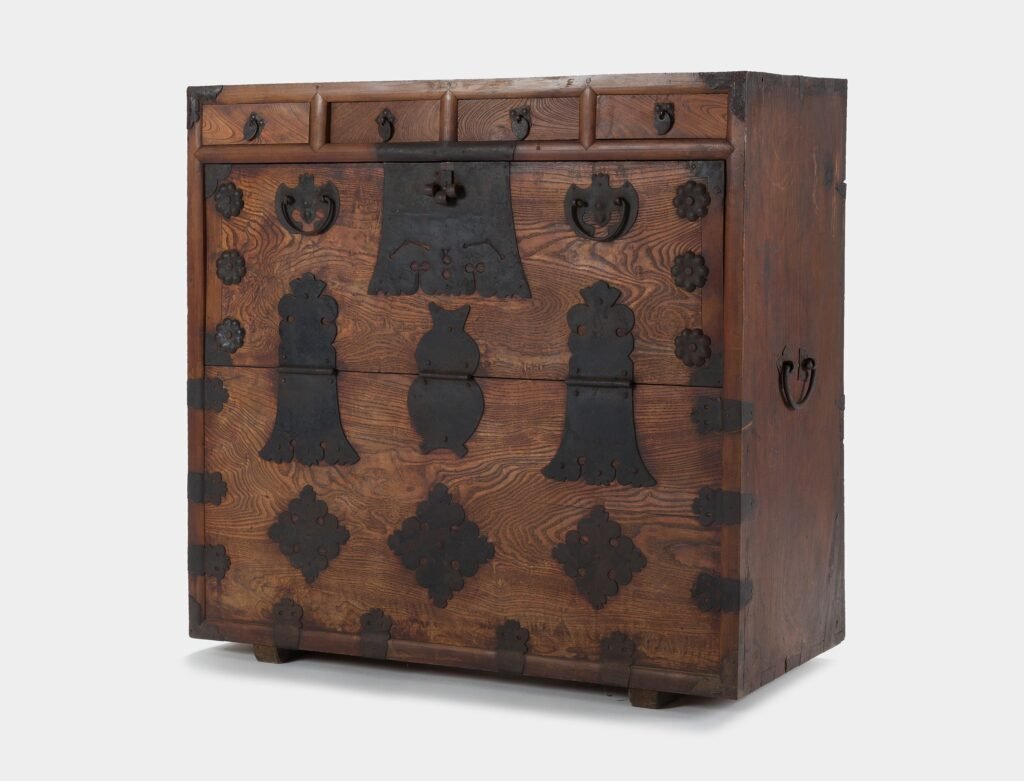
The presence of four drawers at the top front of the cabinet is unusual. In a traditional design, drawers would typically have been placed inside the chest under the top panel.
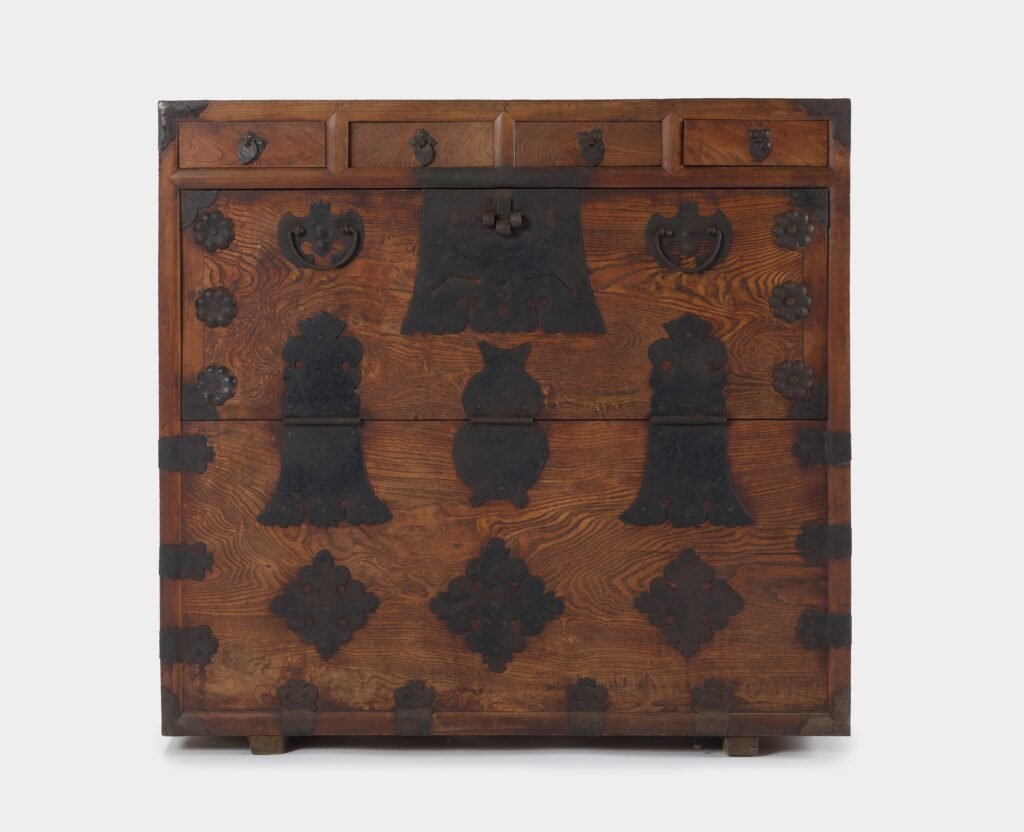

This furniture is designed for storing clothes. It features a frame construction where the door plate and front panel fit into the body. There are four drawers beneath the top plate, with a handle attached to the front. The door plate and front panel are hinged together using swallow-shaped and gourd-type hinges. The door plate is adorned with a swallow-shaped front base, featuring a constellation carving, a flower-shaped wide crown, and a bat-shaped base with a bow-shaped brace. Additionally, a diamond flower-shaped decoration plate is affixed to the front panel. The connection between the front panel and the side panel is reinforced with Yeouido-type fittings.
BANDAJI WITH MULTI LEVELS.
The following bandajis are quite unusual, built on two levels with a combination of a bandaji-type opening and another storage compartment, or with two bandajis superimposed. They are coming from the same province, Gangwon Do. Further research is necessary.
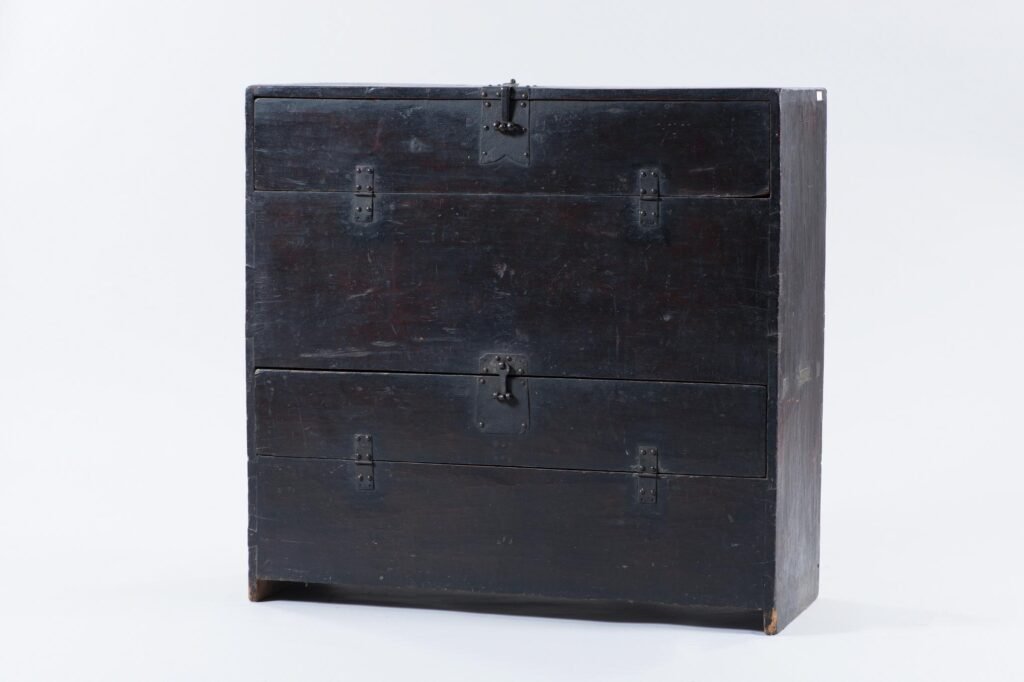
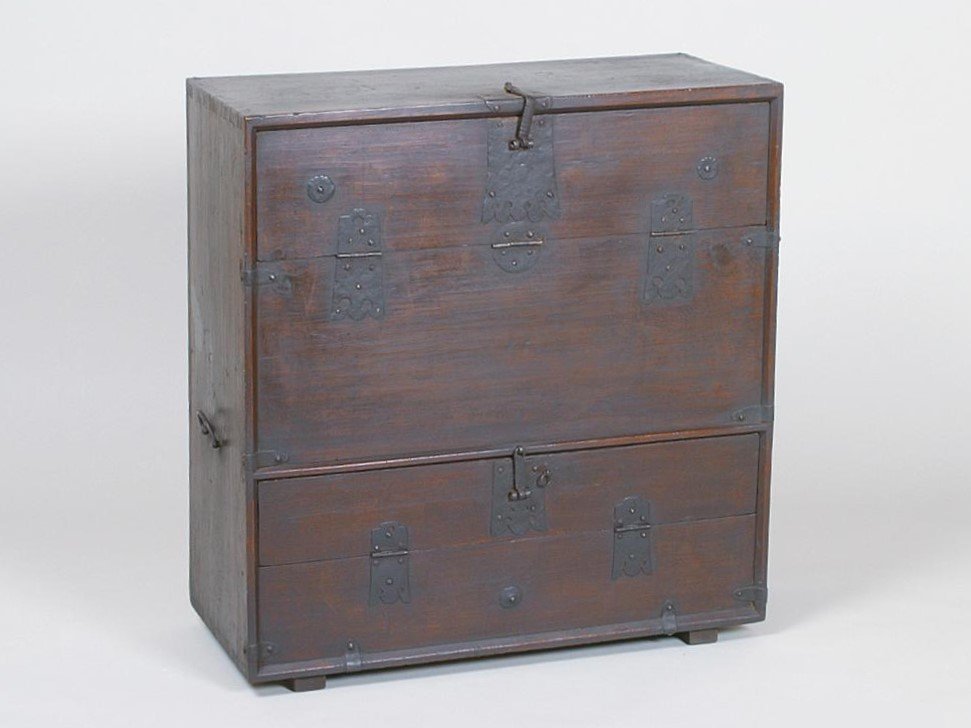
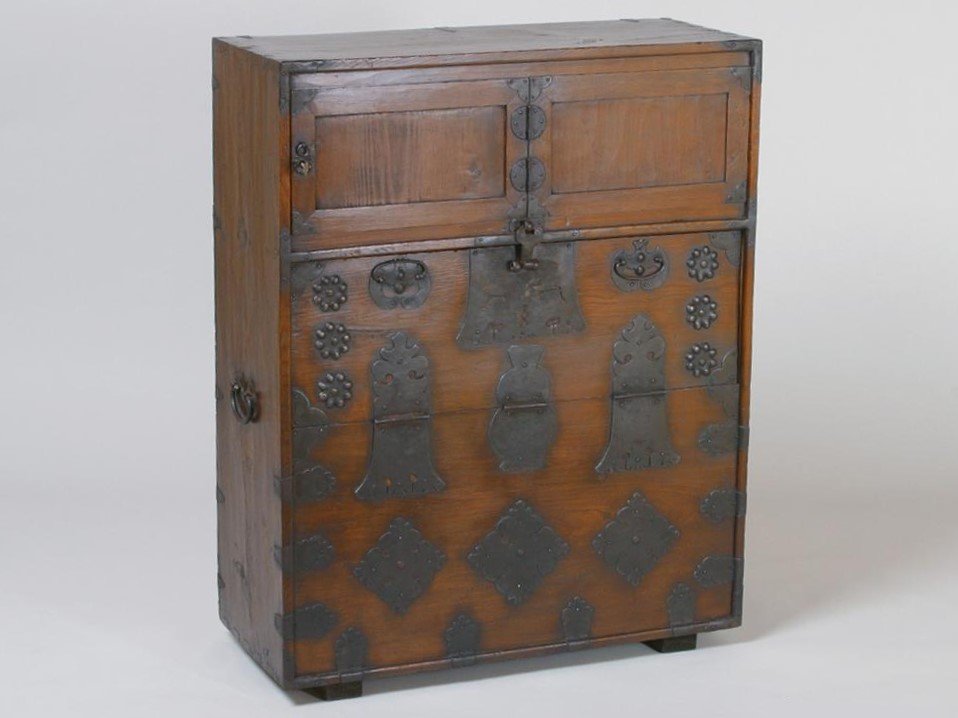


Dated Japanese occupation. H. 126cm, W. 89cm, D. 44cm.
Collection: National Folk Museum of Korea. Seoul.
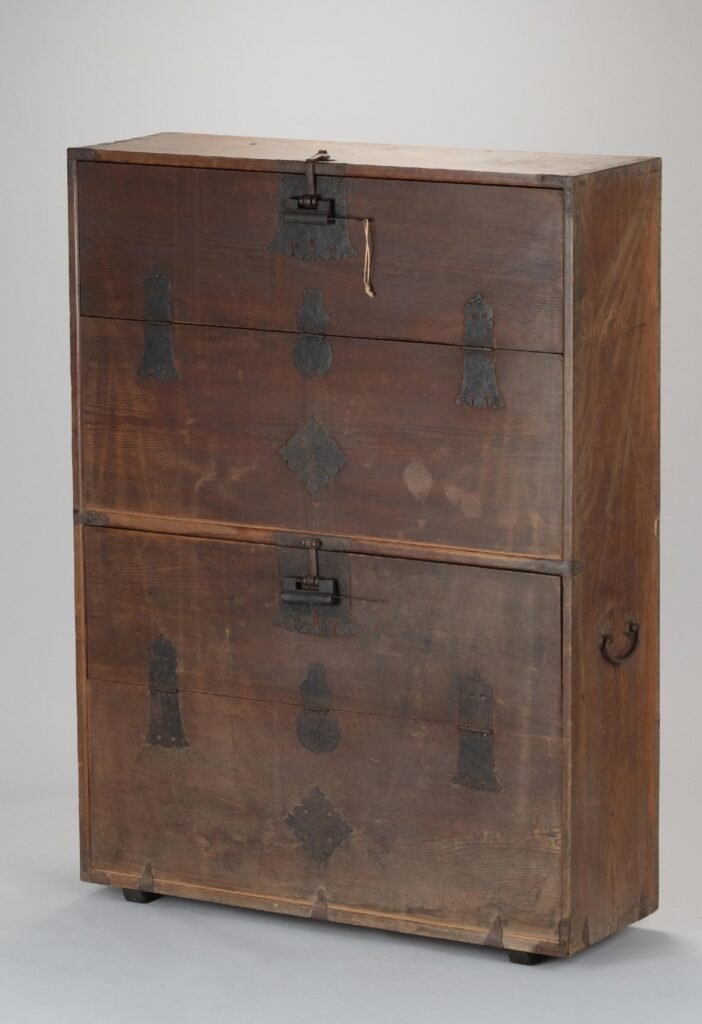
Collection: National Folk Museum, Seoul,

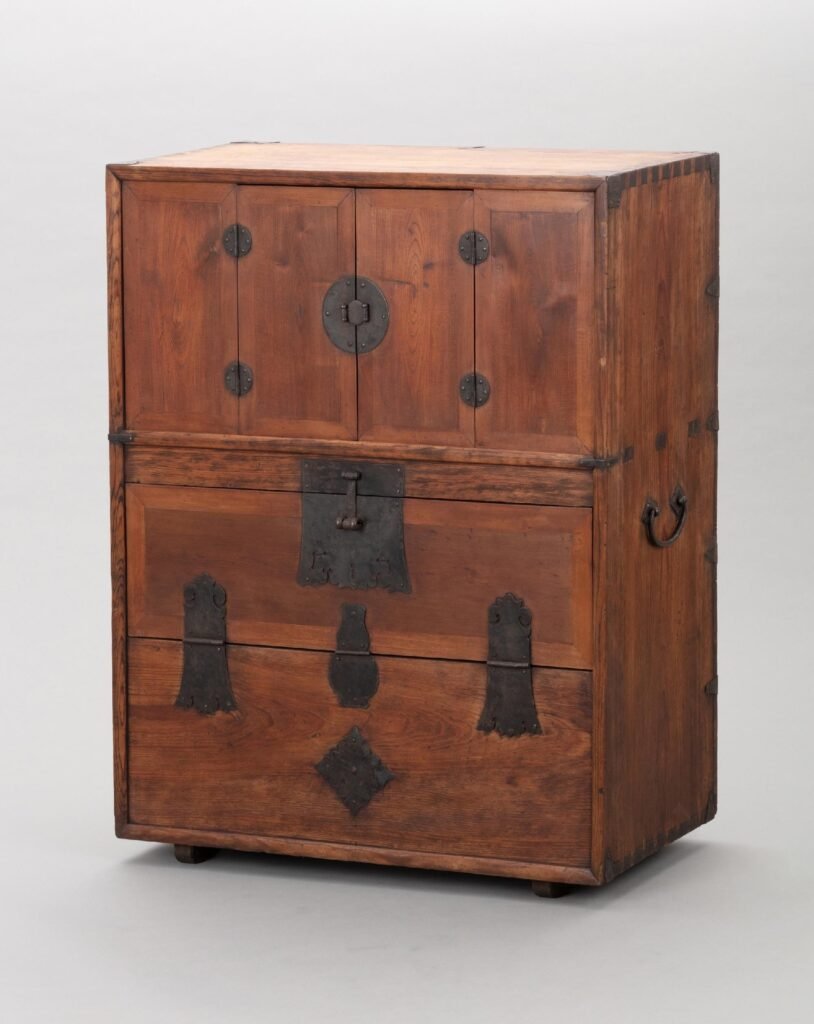
Collection: National Folk Museum.

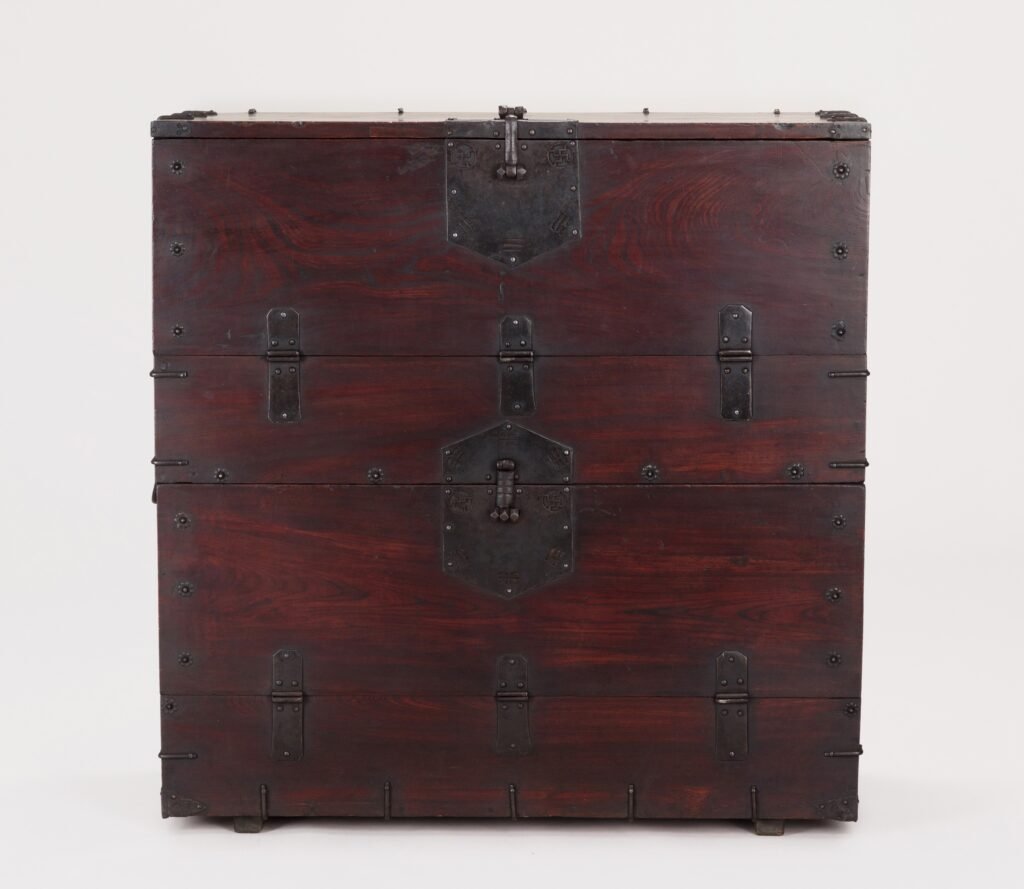
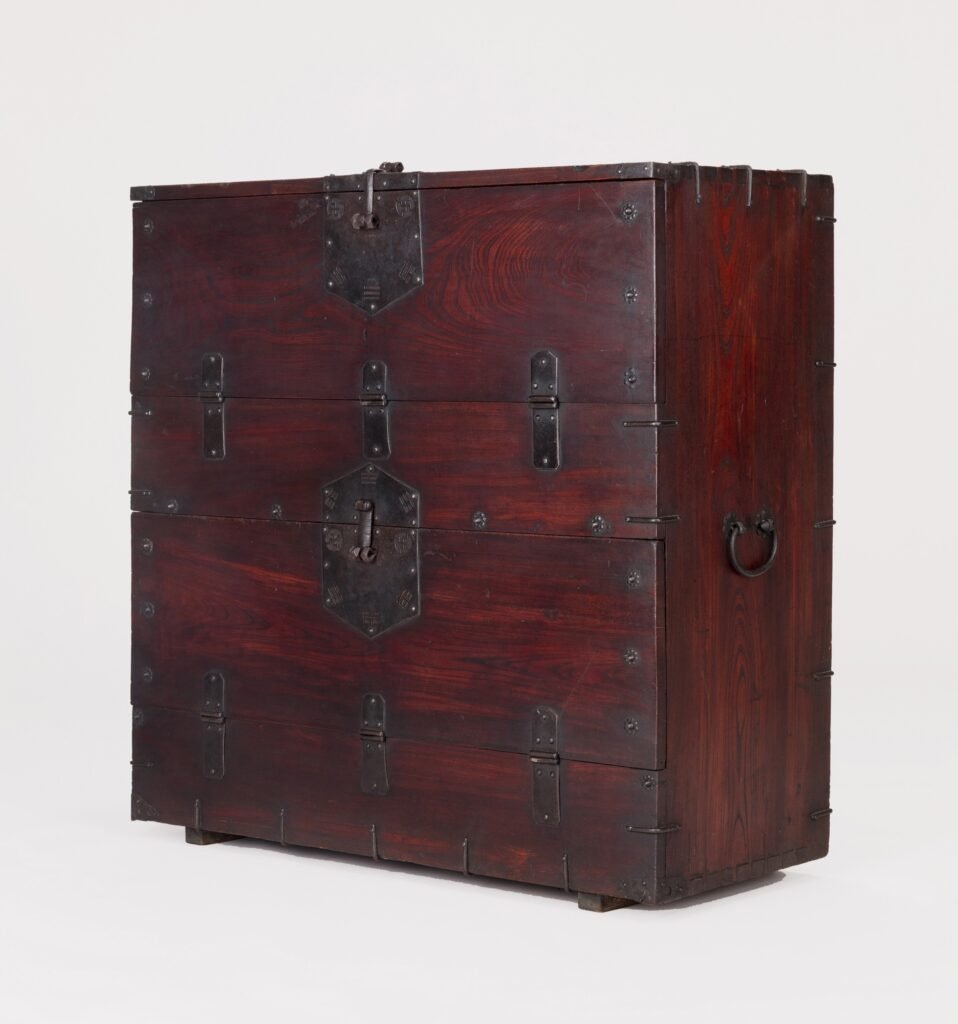
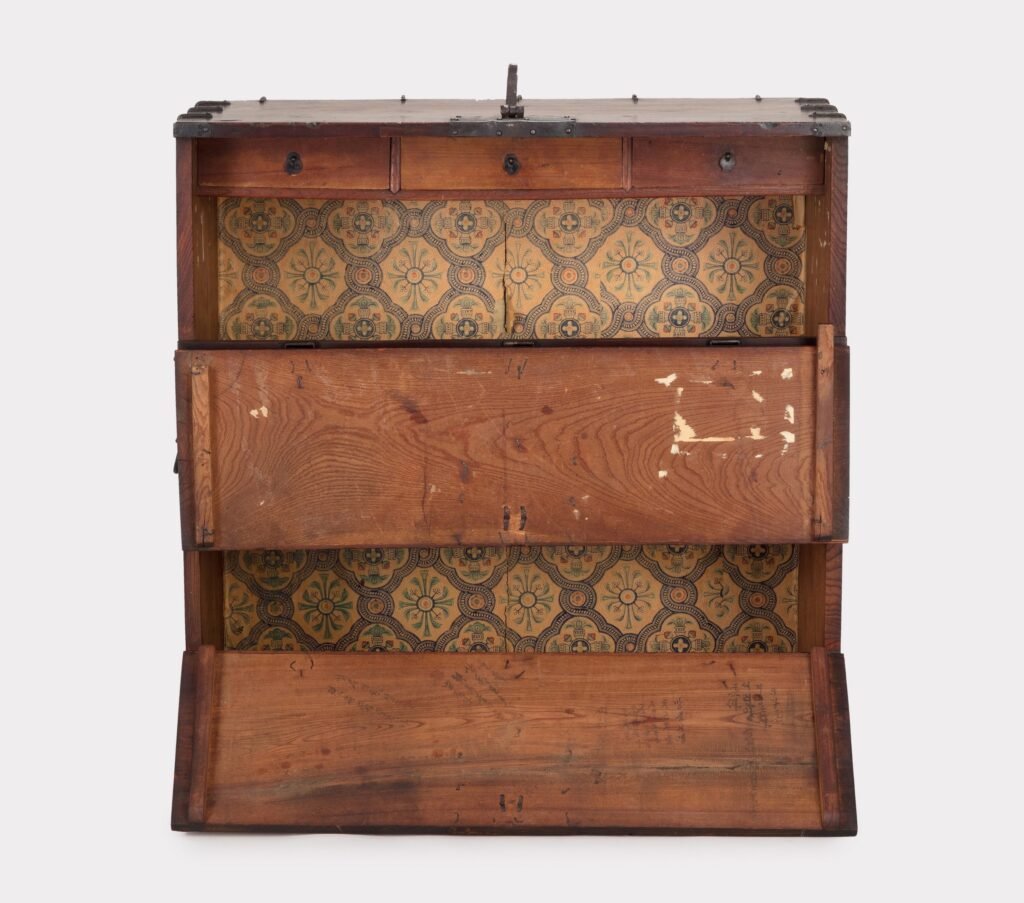
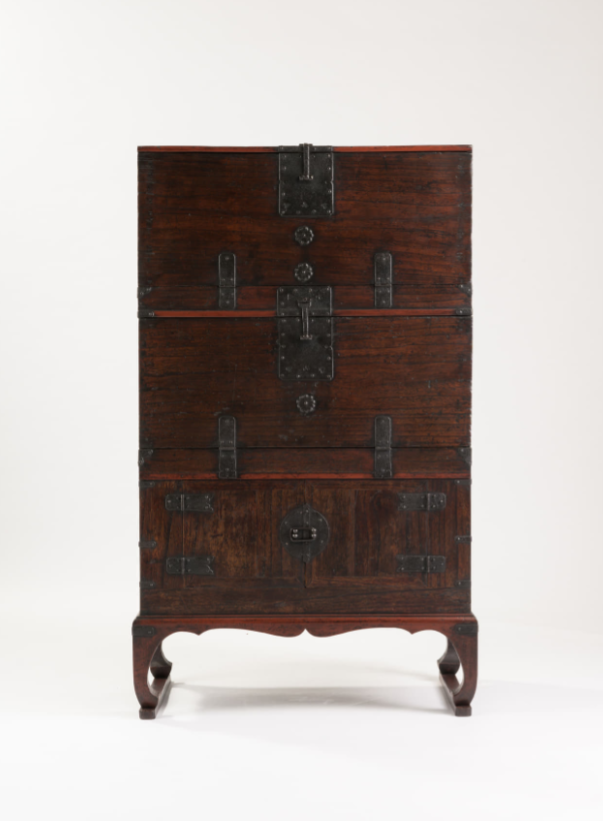
Collection: Seoul Museum of Craft Art.
The upper and middle level are bandaji type openings with very large opening sections. The bottom part is composed of a swing door.

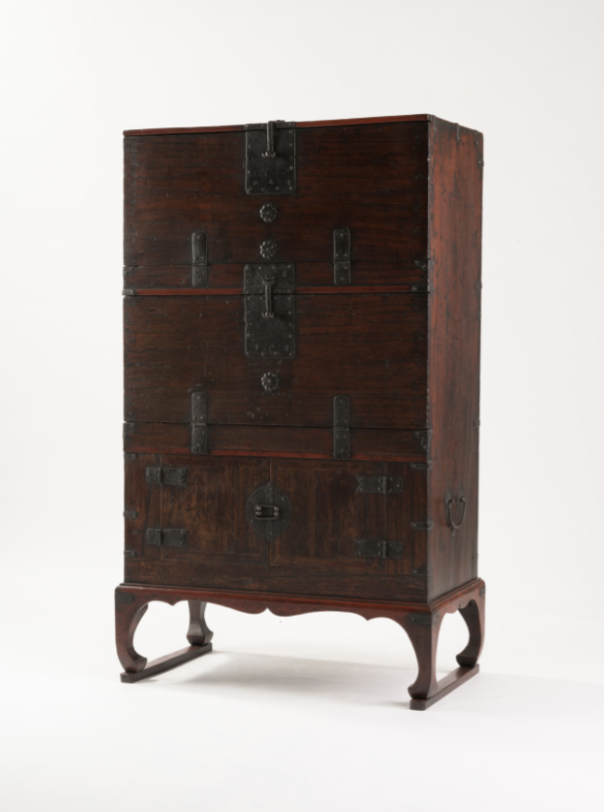
JANG.
In Jang, especially clothing chests, the design is homogeneous with few variations. Built with few levels (two or three), each level has a similar design, usually a storage space accessible by double doors (first two photos).
The furniture below are all multi-level, but each level is different, combining Bandaji-type openings, storage spaces with doors or sliding panels, and open spaces.
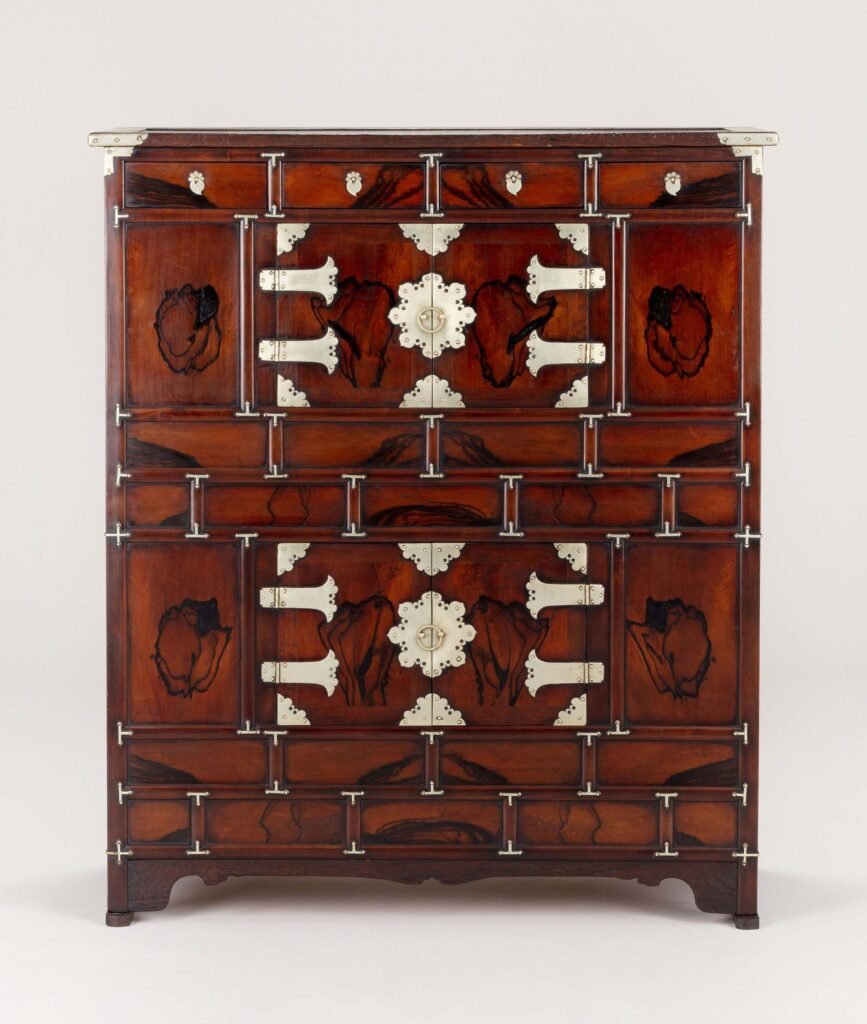

MODIFIED DESIGNS.

Collection: National Folk Museum, Seoul.
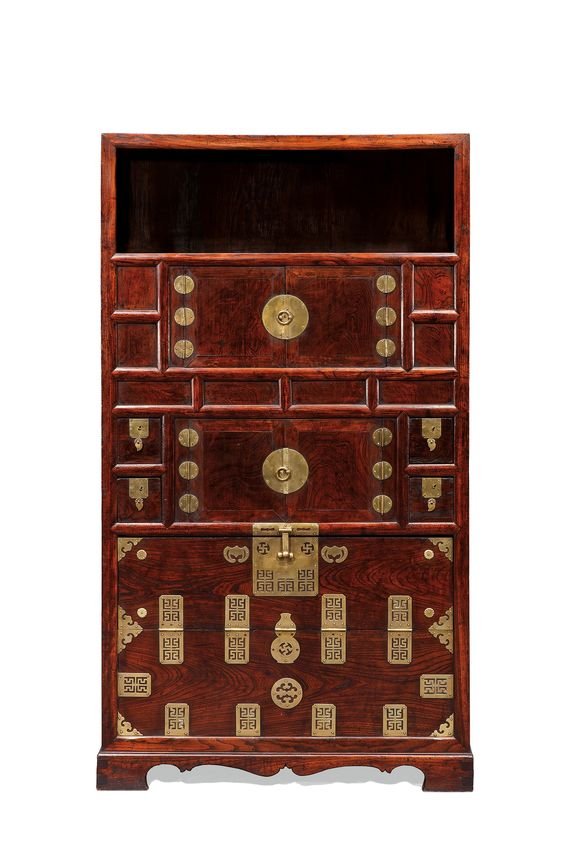
20th century. Zelkova wood, oak, and pine.
Yellow brass fittings.
H. 161,5cm, W. 90,5cm, D. 47,5cm.


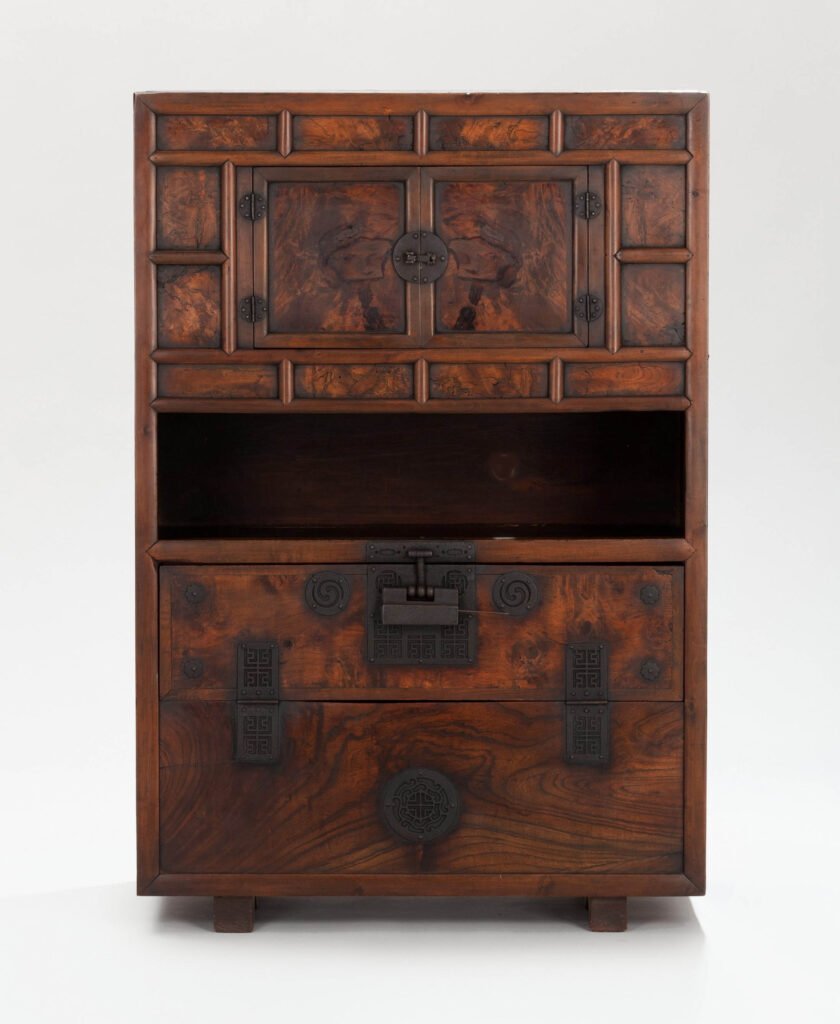

H. 173cm, W. 90,5cm, D. 46cm. Collection: National Folk Museum.
What makes this chest unique is the presence of a box placed on top.

A very unusual three-level chest combines traditional central opening doors with a bottom ‘Bandaji’ type compartment. Note also the presence of some open compartments on the top of the chest as well as on both sides of the second level.
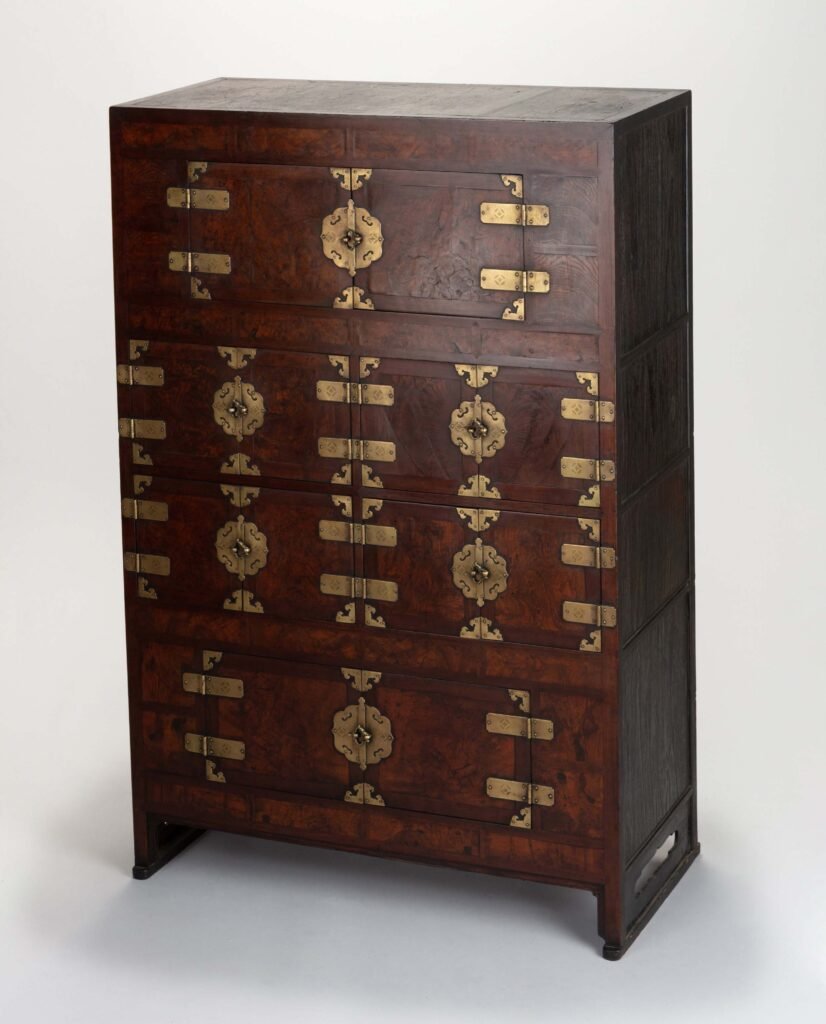
H. 140cm, W. 91,5cm, D. 42,5cm.
Collection: National Folk Museum, Seoul.

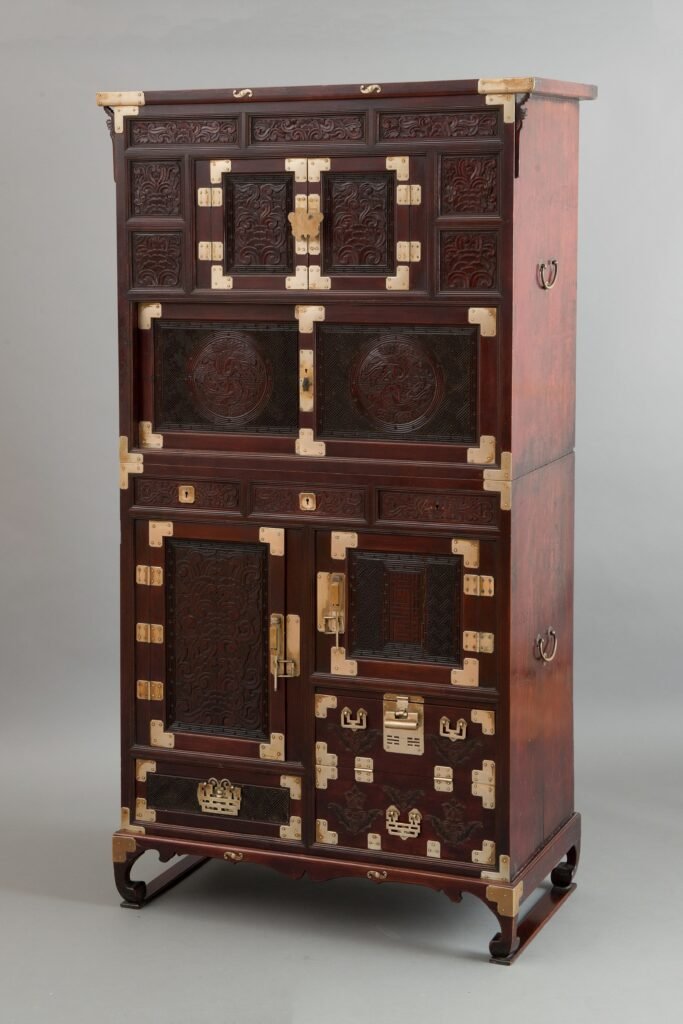
This two-tier cabinet features a complex design. The upper cabinet includes a small door opening section and a sliding door compartment below. The lower cabinet has a door compartment on the left, with a drawer compartment beneath it, and a smaller door compartment on the right, with a bandaji-type opening compartment below. The front is intricately engraved.
